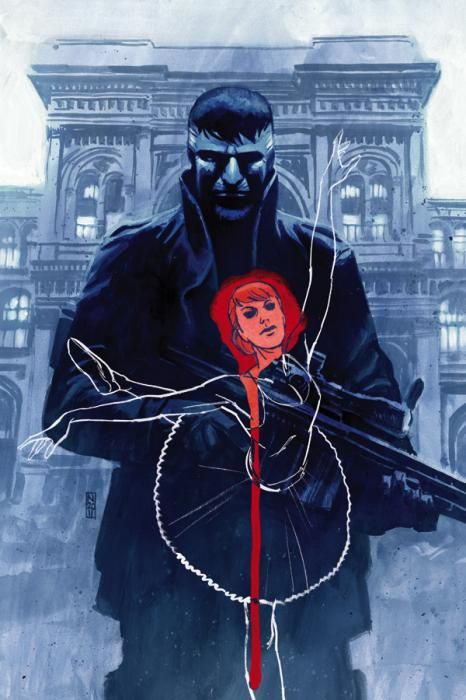With "Dancer" #1, Image adds another title to their collection that transcends any expectations. Being the father of three young ladies who are very involved in dance, things with tutus and Pointe shoes draw my attention more than they would a "normal" thirty-something comic reviewer. I'm not very savvy in all of the terms and descriptions in the world of dance, but I know I can rely on my girls to guide me through. Conversely, if I find something dance-related and fun, I like to share with them.
Plain and simple, I will not be sharing this book with any of them. Yet.
Yes, the shady man holding an assault rifle with the image of a ballerina superimposed overtop on the cover might have been a tip that this was not going to be an all ages dancer's story. Tack on the blood spot framing the ballerina's face and the cover alone might cause my little dancers some significant degree of unrest. Nathan Edmondson's story inside spends only a few panels in the world of Quinn, the presumed titular "Dancer."
Most of the issue is filled with a mysterious assassin gunning a man down in a swanky Brazilian restaurant. That assassin begins to trail Alan, Quinn's boyfriend, as Alan and Quinn share a quiet respite in a cafe in Milan. From there, things get intense and a chase is launched. The energy and tension generated by the chase is not unlike Greg Rucka's Atticus Kodiak novels. I found myself linking back to the Kodiak novels more than once as there are many similarities in pacing and story elements. It's not a carbon copy, nor is it an imitation of anything Rucka does, but it is an exciting adventure that Edmondson and artist Nic Klein have concocted.
Klein's work is lush with shadows, invoking chiaroscuro and filling "Dancer" #1 with uncertainty and foreboding. Klein's figures are very similar in style to Phil Hester, but with a different level of detail than Hester employs. Using cross-hatching at the edges of the shadows, Klein gives Quinn and Alan an uneasiness demanded by their situation. Klein also handles the colors, making the imagery more cohesive.
Just as "Dancer" seems to be cast as a simple suspense story, with a former assassin trying to outrun his past, Edmondson throws in a sharp turn and changes the pitch, complexion, and plot of this story. It's that sharp turn that really sells this book to me. I didn't see it coming, but I'm glad it did. Now this story is something altogether different than what I thought I was getting in a book titled "Dancer." Turns out this just might not have as much to do with dancing as I was expecting, but it does have my attention.

